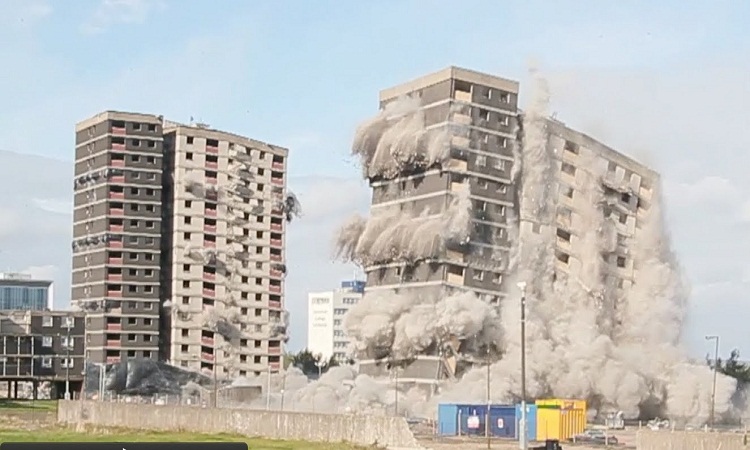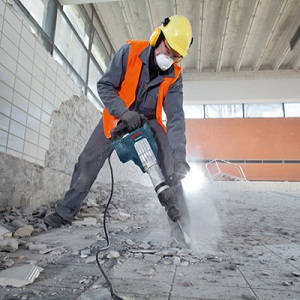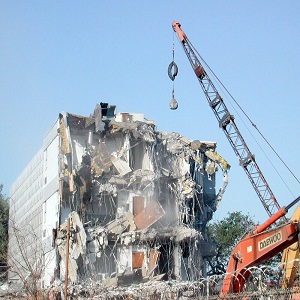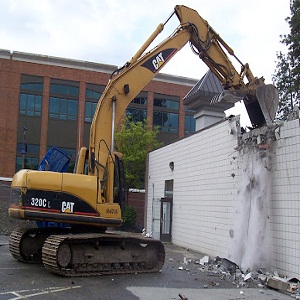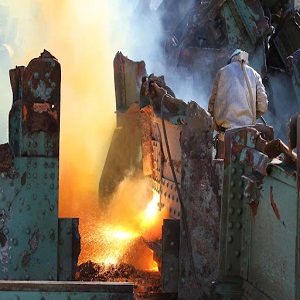What is Building Demolition?
The building demolition technique means destruction, tearing down, breakup, removal of some parts of the building or whole structure, generally demolition is carried out when the life of the building is over or to construct a new structure by replacing the older one, also it is done when the structure lost its stability or having any structural damage.
A building is designed by considering a span of life, but when this design life of the building is over, the structure is not safe for living for self as well as neighboring building. So, demolition of the building becomes necessary.
There are too many methods utilized for building demolition for the safe & careful removal of existing buildings & structures to use the land for some other purpose.
There can be numerous reasons for the building demolition such as structural damage, illegal construction, and loss of stability or plans to restructure.
Requirements to Demolish the Building
Demolition of the building is necessary for the following conditions:
- When the building is very old.
- If any portion or story of the building is weakened.
- If you want any internal changes are to be made to the existing building.
- When the design period of the building or structure is completed.
- When the building has been severely damaged by an earthquake or other causes.
Different Building Demolition Techniques
If any building to be demolished is surrounded by other residential buildings, you are required to find appropriate means to properly demolish the building, therefore demolition method selection is pivotal.
- Non-Engineering Demolition
- Manual Demolition
- Engineering Demolition
- Mechanical Method
- Implosion
- Deconstruction Method
Non-Engineering Demolition
Manual Demolition
- Manual dismantling or demolition works are used in places where heavy equipment can’t be used because of the proximity of buildings vulnerable to damage – especially in historic buildings in poor structural condition.
- Whether it is a commercial building or residential structure, manual demolition works best for smaller structures. Contractors also find it effective for structures that are located in narrow spaces that are often present in urban areas.
- This is normally carried out by contractors using a manual tool which is portable, tools utilized are sledgehammer, jackhammer, and drillers.
Engineering Demolition
Mechanical Method
There are different types of methods in the Mechanical Demolition Technique which are described below:
Wrecking Ball Method
Demolition of building with this method utilized a wrecking ball, which can weigh up to 13,500 pounds. The wrecking ball method has been used for many years and is still popular since it is so effective.
In a wrecking ball method, a crane driver will strike the wrecking ball onto the structure and swing the ball through the structure.
The crane operator must be very good and skilled at his job. If the operator doesn’t control the swing of the structure and either hit the surrounded structures.
This method of demolition is very noisy & generates a lot of dust, which does not make it popular with those around the worksite.
Pusher Arm Technique
The pusher arm demolition technique is newer than the wrecking ball method and solves some of its problems.
In this method, professionals attach a long arm to a piece of construction equipment such as an excavator and use it to pull sections of the structure down.
After the equipment pulls the parts of the structure to the ground, the remaining demolition crew will do the work to break them up even smaller so they can be discarded.
The pusher arm technique is only utilized for buildings that are over 20 meters tall. Generally, if the structure is shorter than this, the wrecking ball method should work is best suited.
Thermic Lance Technique
A burning bar or thermic lance is a tool that heats & melts steel elements or concrete in the presence of pressurized oxygen to create very high temperatures for cutting.
It contains a long steel tube filled with alloy steel rods, sometimes mixed with aluminum rods to enhance the heat output.
Flame is produced by having a supply of pure oxygen with a temperature of 2500 degrees centigrade to melt the reinforcement or concrete.
Non-Explosive Demolition
In this technique of building demolition, some rounded halls are drilled along the desired line of separation & are filled with slurry which is a special material.
When the slurry is poured into the holes water is filled into the drilled holes, after a few hours, the slurry expands as a result cracking will appear on the structure which helps in the east demolition of the structure.
Deliberate Collapse Method
In the deliberate collapse method, the key structural elements of the building like beams & columns are systematically removed or weakened so that the structure can be deliberately lowered.
This method for building demolition is utilized only for the demolition of a building that is separated from the surrounding building & the ground level should be almost level.
This method is not suitable for the prestressed concrete structure.
Pressure Jetting Method
In the pressure jetting method, a water jet is released from the nozzle at high pressure (250-300 MPa) on the concrete structure. This jet breaks the plain concrete due to abrasion.
An abrasive type of water jet is utilized to cut the concrete elements, in which garnet or steel particles cut the concrete. This method of demolition has been invented for the demolition of nuclear power plants.
The rear part of the visible element that is to be broken by the water jet should be shielded so as not to damage nearby individuals & property.
The water utilized in water jets should be recycled & reusable.
Implosion
In this special technique of demolition, professionals carefully place the explosives to knock out a building’s structural supports, causing it to collapse in on it. The process is very effective & takes very little time for demolition.
The implosion technique for demolition is mostly utilized in urban areas on very large structures. When the whole process is done perfectly, the implosion should stay within the perimeter where the existing structure stood so the process does not interfere with any nearby buildings or property.
The fundamental idea of the implosion technique is very simple, in which if the support of the building is removed from a certain point in front, the upper part of the structure collapse on the lower part.
This method is an advanced technique for the demolition of high-rise buildings or structures.
In this method, the explosives are arranged in such a way that the whole structure falls inwards towards its center of gravity.
Deconstruction Method
The deconstruction method is a slow & careful process that is almost the reverse process of building construction.
Non-Structural Method: Deconstruct of doors, windows, flooring, etc.
Structural Method: Dismantling of RCC elements like beams, columns, walls, etc.
Factors to be Considered While Selecting the Demolition Method
The factors listed below should be taken into consideration while choosing the method of demolition:
Type of Demolition
The method of building demolition depends on the type of structure to be demolished. Methods for building demolition may change for different types of structures such as load-bearing structures, RCC framed structures, steel structures, etc.
Size of the Structure
If the size of the structure is small, no special method is required for demolition, demolition can be done manually. Special techniques are required if the structure is large.
Duration
Select the method of demolition keeping in view that the time available for the demolition.
Location of structure
Noise, dust, company limits
Available Machines
Skills of labors
Safety
Surrounding structures
The behavior of structures, etc.
Safety Measures to be Taken During Demolition of Building
Followings are some safety precautions to be kept in mind while starting the project of demolition of building:
Disconnection of Utilities
- Drainage and sewage line
- Electricity supply
- Gas pipeline
- Water supply line
- If there is an underground route
- Most of the services (utilities) are underground are properly surveyed and isolate.
General Safety
- Putting danger signs and warning boards around the demolition site.
- Place barricades at the entrance to the structure or set up watchman.
- Place red lights at all barricades during the night.
- Give safety equipment to each worker and explain its use properly.
- Give celluloid lance goggles to workers to prevent eyes against small particles, dust particles & concrete fragments, etc.
- Provide leather gloves to workers during the breaking of RCC elements.
- Arrange First Aid Box at the demolition site.
- Provide fire extinguishers equipment demolition site.
Walkways and Sidewalks
- To make walkways for the movement of visitors &workers.
- Keep it free from debris or other broken materials.
- Before demolishing any building, temporarily close the road that is most affected by traffic.
- To keep children& other persons away from the building.
- If the height of the structure is more than two-story or 7.5 m, make a sidewalk next to the structure.
Catch Platforms
- Build a ‘catch platforms’ of strong planks while breaking down the exterior walls of high-rise buildings, so as not to injure the lower-level laborers or the general public on the ground.
- Such catch platforms should not be more than 3 stories below the floor wall which is breaking.
- The width of such a platform should not be less than 1.5 m. It should have a tall parapet wall on the outside.
Protective Screens
- Prepare bamboo scaffolding on the roadside of the building to be demolished and put a protective screen along with it so that no one is injured by blowing bricks, concrete, pieces of wood, etc. during demolition.
- Green net can be utilized for such screens.
Dust and Noise
- Continuous watering to prevent flying dust during the demolition process.
- Install silencer with jackhammer and excavator to prevent noise pollution.
- The air compressor should be kind of super silent.
- Demolition work should not be executed between 7 pm to 7 am.
Temporary Supports
- Temporary supports are essential to withstand a load of machinery utilized for demolition, broken debris, large pieces of concrete falling from above.
- Temporary supports should be made of heavy structural steel or strong wood planks.
- Surrounding buildings, public utilities, retaining walls, etc. also need temporary support.
- If there is a possibility of damage to the foundation of a nearby building, use methods like shoring, under pining to support the foundation of such a building.
Conclusion
Choosing the right demolition method is necessary and it needs to be done safely and correctly so the surrounding neighboring building or structure does not get affected. Employed a demolition expert who has the skill & experience of undertaking structure detail, soil property investigation, and safety of the surrounding buildings and public areas before execution of the building demolition project.
